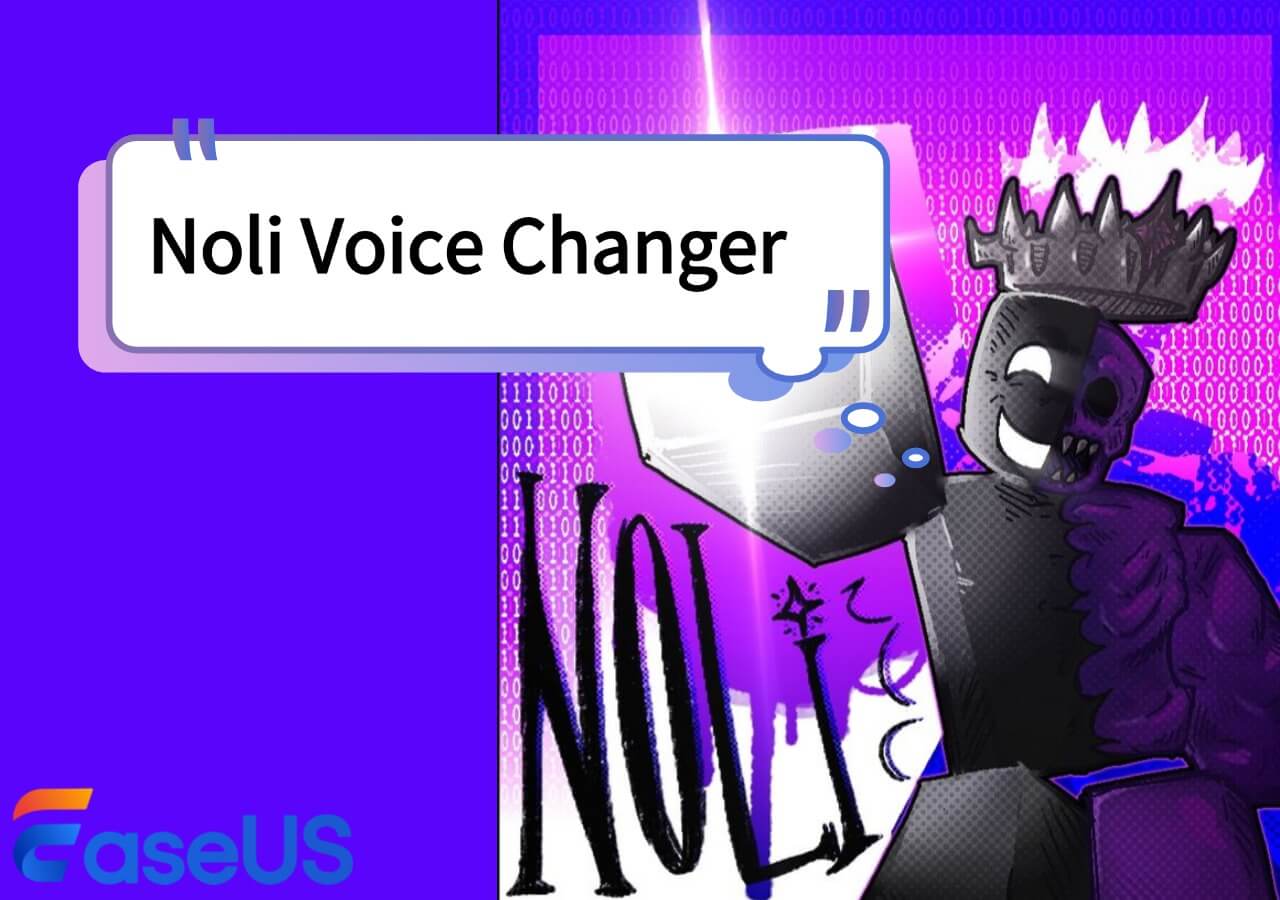-
![]()
Joey Albert
Joey has been involved with tech ever since she joined the EaseUS editor team in March 2011 and now she is a senior website editor. She is good at solving various issues, such as video downloading and recording.…Read full bio -
![]()
Alin
Alin is a sophisticated editor for EaseUS in tech blog writing. She is proficient in writing articles related to screen recording, voice changing, and PDF file editing. She also wrote blogs about data recovery, disk partitioning, data backup, etc.…Read full bio -
Jean has been working as a professional website editor for quite a long time. Her articles focus on topics of computer backup, data security tips, data recovery, and disk partitioning. Also, she writes many guides and tutorials on PC hardware & software troubleshooting. She keeps two lovely parrots and likes making vlogs of pets. With experience in video recording and video editing, she starts writing blogs on multimedia topics now.…Read full bio
-
![]()
Gorilla
Gorilla joined EaseUS in 2022. As a smartphone lover, she stays on top of Android unlocking skills and iOS troubleshooting tips. In addition, she also devotes herself to data recovery and transfer issues.…Read full bio -
![]()
Rel
Rel has always maintained a strong curiosity about the computer field and is committed to the research of the most efficient and practical computer problem solutions.…Read full bio -
![]()
Dawn Tang
Dawn Tang is a seasoned professional with a year-long record of crafting informative Backup & Recovery articles. Currently, she's channeling her expertise into the world of video editing software, embodying adaptability and a passion for mastering new digital domains.…Read full bio -
![]()
Sasha
Sasha is a girl who enjoys researching various electronic products and is dedicated to helping readers solve a wide range of technology-related issues. On EaseUS, she excels at providing readers with concise solutions in audio and video editing.…Read full bio
Page Table of Contents
0 Views |
0 min read
AI technology has propelled human-like voice synthesis to the ground like never before, and it is indistinguishable from real human voice. RVC AI voice stands at the forefront of the revolution and takes voice cloning technology to the next level.
This article delves into the intricacies of RVC AI voice changer, its capabilities, voice generators, and how to use it profoundly.
What Is RVC AI Voice/RVC Voice Changer
What is it, and how does it work? RVC is short for Retrieval-based Voice Conversion. The RVC V2 is an upgraded version. It is an open-source and cutting-edge voice transformation technology that uses advanced artificial intelligence and machine learning algorithms to create highly realistic and customizable synthetic voices.
RVC first analyzes the pitch, duration, and phonetic content from the input speaker, searches the database of the target speaker for segments, then matches the extracted features and outputs the voice.
What can it do? RVC voice changer enables speech-to-speech conversions while preserving the intonation, timbre, and vocal characteristics of the speaker. Written in Python, you can run the algorithm on multiple OS and speak in English, Chinese, Japanese, Korean, French, Turkish, and Portuguese. It is basically pre-recorded using voice samples from the target speaker, so it is real-time with low latency. This outruns So-vits SVC, the previous voice conversion technology.
Where is it used? RVC is used to create AI speech, dubbing, voice acting, and AI cover songs. It also provides a way to communicate in customer service and call centers.
🧩Key Features
- Real-time voice conversion from a pro-pressing voice sample resource.
- Natural-sounding effect by using advanced algorithm.
- Handle various accents, languages, and speaking styles.
💪Challenges
- Collecting and managing the input database can be resource-intensive.
- Raise ethical concerns regarding privacy, consent, and potential misuse like deepfake.
RVC AI Voice Changer Generator
If you are not familiar with the code and want to gain access to the RVC voice changer, then do not miss the tool below.
EaseUS VoiceWave is a real-time RVC voice changer based on the advanced RVC V2 algorithm. With it, you can turn your own voice into hundreds of realistic AI voice models on 1000+ online games and 1000+ instant messaging apps, basically any app with a microphone.
Choosing from 200+ voice effects and 300+ soundboards, you can change your voice into Donald Trump, SpongeBob, Juice Wrld, Anime Girl, and more. Or customize your own voice effect.
🧩Key Features
- Newly added AI voice model with more interesting characters.
- It supports any games and apps with a microphone.
- Include 200+ voices and 300+ soundboards.
- Make your own personal AI voice.
- Backed by the advanced RVC voice model.
How to use EaseUS VoiceWave RVC real-time voice changer:
Step 1. Open EaseUS VoiceWave and go to settings to set up your microphone and headphones.

Step 2. Select your desired voice effect on the page and change other settings as needed. Now you can speak in the voice.

To integrate with other platforms like Discord, open the app and select VoiceWave Microphone as input voice in the voice settings.
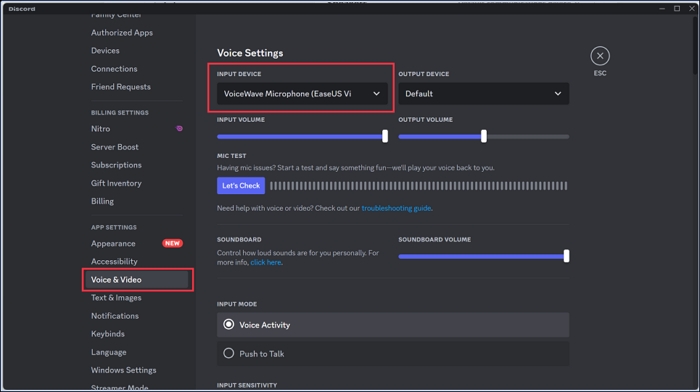
Step 3. Apply the soundboard you like for fun during the live broadcast.

Step 4. Import the audio/video file to make your own voice effect.
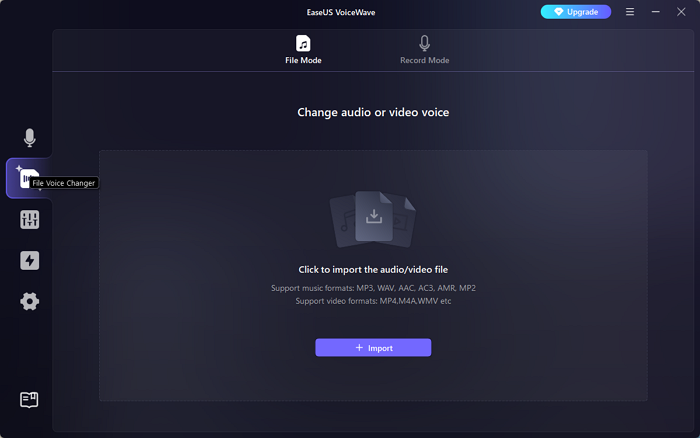
See also:
RVC AI Voice Model Online
Online RVC voice changers are user-friendly and require no installation, making them easily accessible and convenient for users to utilize directly from their web browsers without the need for additional software.
Hugging Face is a centralized AI community that hosts and collaborates on models, datasets, and applications on the basis of machine learning. It includes various open-source transformer models for image, text, and audio.
Hugging Face offers the tools to demo, run, and deploy AI in live applications. Users can browse and use models and datasets shared by others. Often compared to GitHub for machine learning, it enables developers to openly share and test their work, reducing model training time and resource use. However, the voice effect varies with the models.
To use the Hugging Face RVC AI voice model online:
Step 1. Visit the website, choose "Audio-to-Audio" on the left panel, and select the RVC model listed on the right.
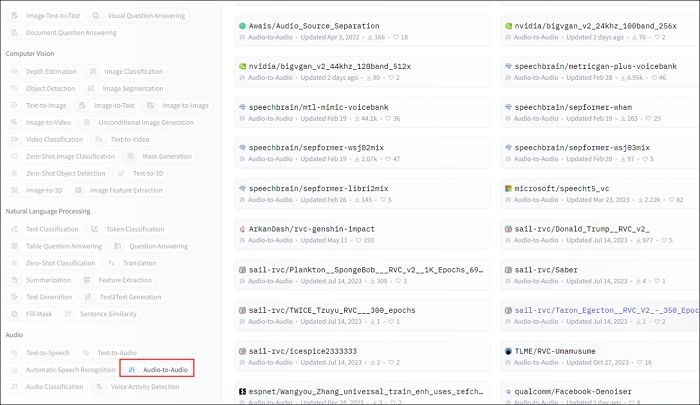
Step 2. You can see the history here. Click one and use it directly.
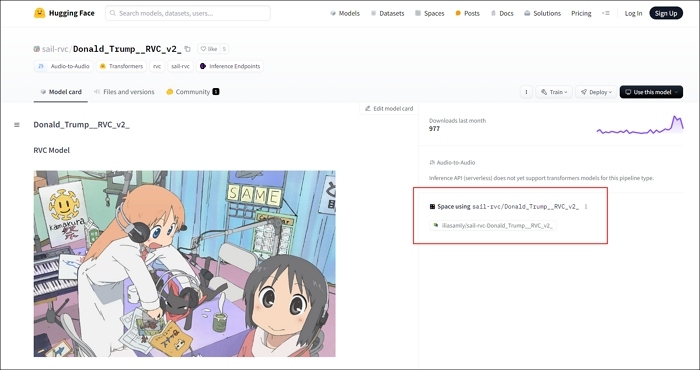
Step 3. Upload your audio file and export it here.

How to Use RVC AI Voice Changer from GitHub
This is a web UI for the RVC GitHub project for easy and fast data training. It offers model fusion for changing timbres, UVR5 for fast vocal-instrument separation, and a high-pitch voice extraction algorithm to avoid muted sounds. But it requires some code knowledge.
Step 1. Install the required dependencies for your system from GitHub.
Step 2. Download RVC WebUI.
Click the title and the latest release.
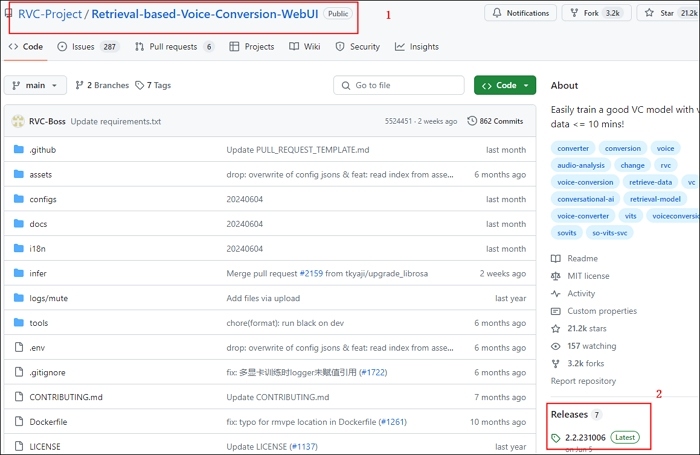
Download the GPU package based on your graphics card.
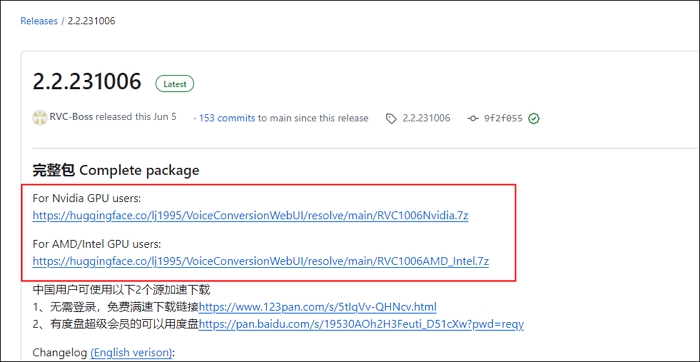
Drag the downloaded file into the folder of your choice and extract it. Remember your folder name (do not leave any space between it).
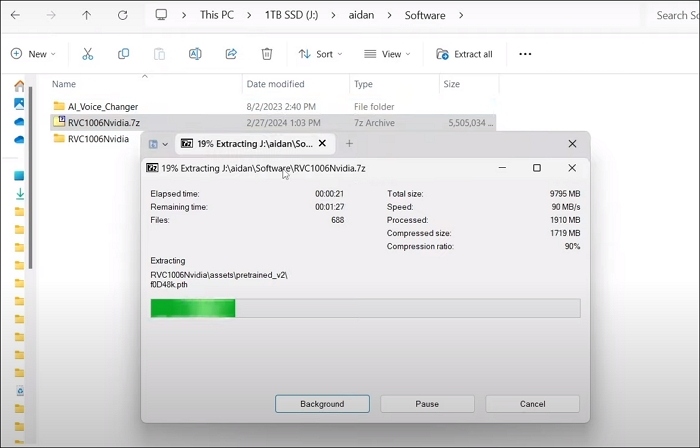
Open the folder and put your installed voice models into the "assets" > "weights."

Run go-realtime-gui-bat.file to open up a command prompt file.
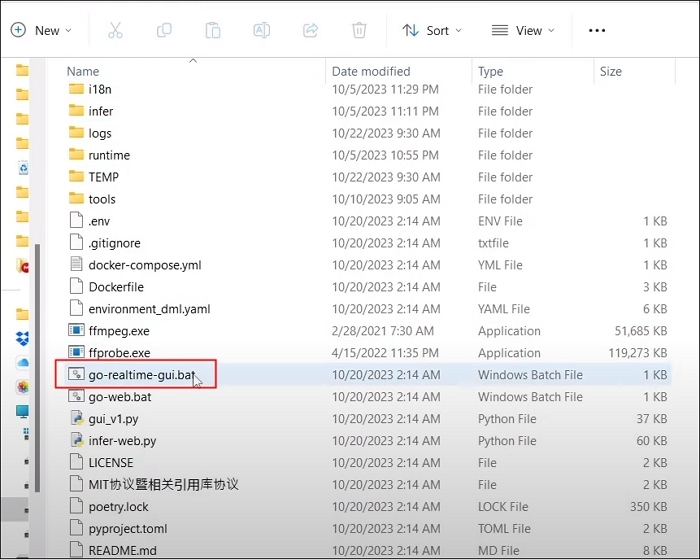
You can see the Web UI.
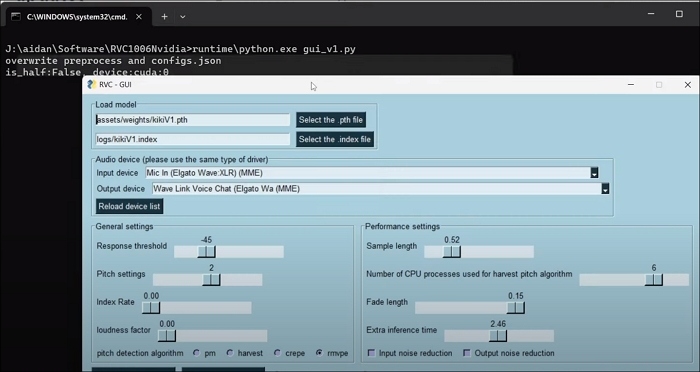
Step 3. Set up the GUI.
Select the voice model and its index (if it hasn't one, leave it).

Set up your input (microphone) and output device (headphone).

General settings.

- Response threshold: microphone sensitivity.
- Pitch settings: your voice pitch.
- Index Rate: if you're using an index.
- Loudness factor: How loud it sounds.
Performance settings:
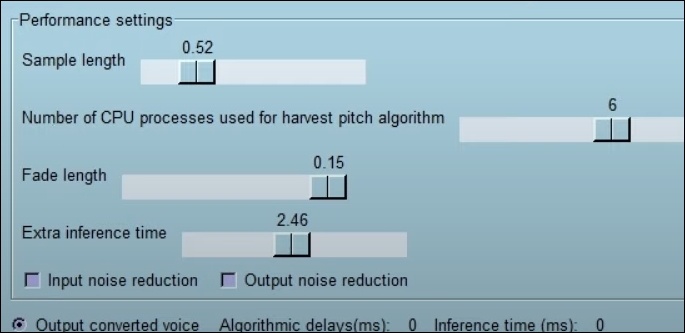
- Sample length: the delay between your voice and the outputted voice. Go lowest.
- Number of CPU processes used for harvest pitch algorithm: leave it default.
- Fade length: the quality of the actual voice is going to be. Go to the top.
- Extra inference time: leave it default.
Step 4. Speak now and experiment with these settings.
If you found this article on RVC AI Voice Changer helpful, please share it with your friends to spread the word about this groundbreaking technology!
Wrapping up
RVC AI Voice Changer significantly advances voice synthesis, offering realistic, customizable synthetic voices for various applications, from entertainment to customer service. It supports real-time voice conversion, multiple languages, and low latency.
For ease of use, online platforms like Hugging Face enable easy sharing and deploying of AI models, making RVC technology accessible without heavy resource demands. Tools like EaseUS VoiceWave provide real-time voice changing with over 200 effects and 300 soundboards, leveraging the RVC V2 algorithm.
RVC AI Voice FAQ
1. Is RVC AI voice free?
RVC AI voice generators offer free versions with basic features and paid versions with advanced features.
2. Where can I get RVC voices?
Tools like Hugging Face, EaseUS VoiceWave, AI Hub, or other RVC generators offer an extensive amount of RVC voices for you to choose. You can download the software or visit the online models to get them.
3. What do you need for RVC voice?
To train a voice model, you need at least an NVIDIA CUDA GPU with more than 8GB of VRAM. For inference (voice conversion), there are no specific minimum requirements; a CPU can handle the task, but it will be much slower.

